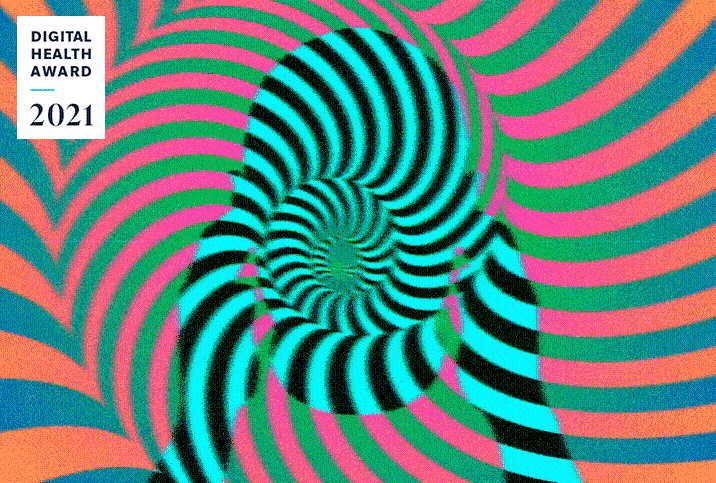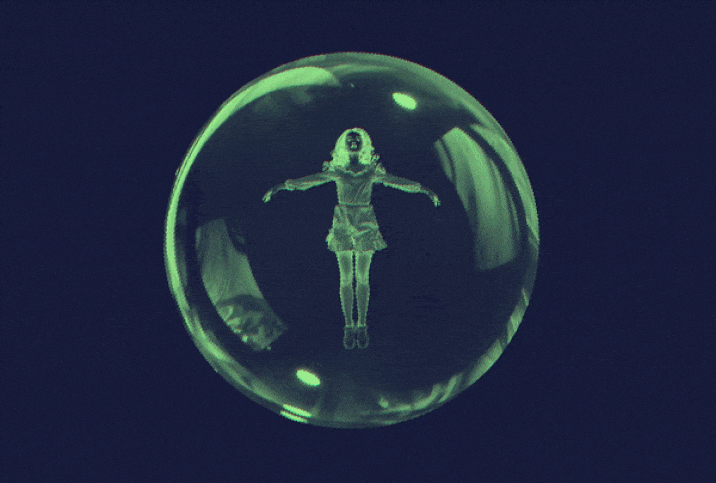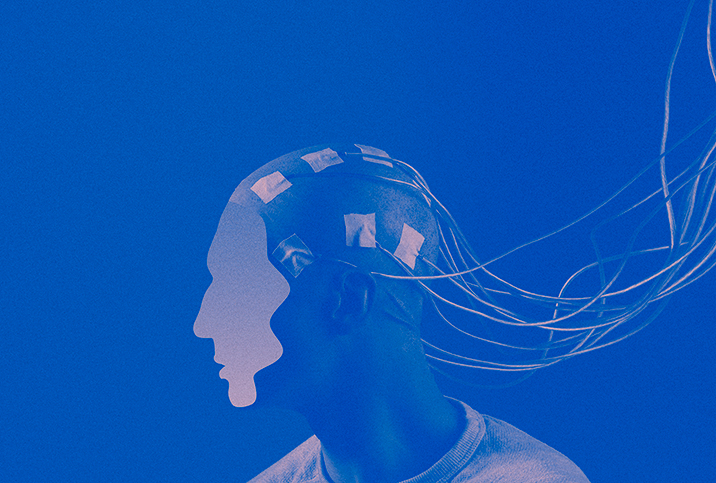Alice in Wonderland Syndrome: The Unsettling Symptoms of Migraines

There's no shortage of theories on why Lewis Carroll wrote "Alice in Wonderland." One prevailing story is that the writing mirrored his own experience, or perhaps repeated experiences, of metamorphopsia, a distorted perception of shapes and objects. Like Alice, Carroll encountered changes in his visual perception, facial recognition, body image and experience of time. English psychiatrist John Todd later coined the term Alice in Wonderland Syndrome (AIWS, or Todd's syndrome) in 1955 due to the similarities to Alice's experiences in the children's book.
The rare neurological disorder presents itself through symptoms that affect each sense, specifically vision, touch and hearing. Individuals with the syndrome experience micropsia (when objects appear smaller than they are) and macropsia (when objects appear larger than they are).
The cause of AIWS is unknown. However, it is linked to migraines, particularly aura migraines; 15 percent of migraine sufferers experience the distortions typical of the disorder.
What is an aura migraine?
Auras are transient neurological symptoms involving the visual field and can occur before the headache phase of a migraine. Symptoms include flashing lights, numbness and tingling in the lips or fingers, limb weakness and jerking, and verbal changes.
The cause of aura migraines isn't entirely understood. However, studies indicate electric or chemical waves moving across the visual cortex can cause aura migraines. Symptoms are exacerbated by stress, light, sleep, some foods and medication, and menstruation.
Juma Mbwana, M.D., a child neurologist, explained the process of migraines as it changes brain activity.
In addition to migraine symptoms, aura migraines can cause visual auras such as blind spots, colored spots, flashes of lights, sparkles and stars, tunnel vision and zigzags.
"Migraines are thought to be caused by what is known as a cortical spreading depression in the brain," Mbwana said. "You can think of a cortical spreading depression as a slow-moving wave of changing brain wave activity across the brain. The changes in brain wave activity are thought to cause migraines, migraine aura and, perhaps, AIWS."
Aura migraines occur in about 1 in 3 people with migraines, typically lasting for up to an hour. In addition to migraine symptoms, aura migraines can cause visual auras such as blind spots, colored spots, flashes of lights, sparkles and stars, tunnel vision and zigzags. Less common symptoms include confusion and difficulty understanding people, muscle weakness, jerking movements, auditory hallucinations and speech problems.
Although AIWS can be associated with epilepsy, infections, brain disorders and drug use, most reported episodes are followed by aura migraines.
The connection between aura migraines and AIWS
AIWS typically occurs during a headache or migraine, specifically during an aura migraine. Episodes last less than 24 hours and may present several times throughout the day. Individuals with AIWS episodes during aura migraines can experience distortions such as body parts and objects looking larger or smaller, color alterations, and changes in perception of time and sound.
Along with size distortions, perceptual distortions such as pelopsia and teleopsia may occur. Individuals with pelopsia feel as if objects are growing in size or approaching nearer. Teleopsia occurs when individuals feel as if objects are getting smaller in size or moving farther away.
Individuals with AIWS may also experience time and sound distortions, and loss of limb control. Time may feel like it's moving slower or faster, sounds seem loud and intrusive, and muscles may feel as if they're moving uncontrollably. These distortions make daily activities difficult.
'For me, it's trying to get out of the bathtub, but the floor falls away from you. It's making a sandwich, using a knife, and having no way to gauge where your hand and fingers are in relation to the knife.'
Carol McIntosh was diagnosed with Alice in Wonderland Syndrome and several migraine types when she was 8 years old.
"Have you ever misjudged a step on the stairs and put your weight into empty air or jarred your foot on a step that isn't there?" McIntosh asked. "For me, it's trying to get out of the bathtub, but the floor falls away from you. It's making a sandwich, using a knife, and having no way to gauge where your hand and fingers are in relation to the knife. It affects everything and makes every action a potentially dangerous act."
Due to its connection with migraines, individuals with AIWS can mistake episodes for migraine symptoms, such as visual auras.
"I didn't know it wasn't a normal response. I thought it was an aura symptom, not a separate and distinct neurological issue," McIntosh stated.
Misconceptions
The neurological condition can be mistaken for a psychological disorder, such as psychosis, schizophrenia or bipolar, as the visual distortions may come across as hallucinations to a physician.
Hallucinations are new and false perceptions of objects that are not present or mistaken for something else. Unlike hallucinations, distortions are not caused by the creation of a false perception; instead, you experience an altered perception of external surroundings that are actually there.
"It is not unusual for AIWS to be misdiagnosed or have a late diagnosis because of the peculiar nature of the symptoms. AIWS may be misdiagnosed as visual hallucinations or malingering," Mbwana said. "If AIWS is suspected, a specialist such as a neurologist or an ophthalmologist may be consulted."
Treatment
According to the American Academy of Neurology, AIWS case descriptions are small, with about 169 case studies published. Due to the small number of diagnoses, there are limited studies on the syndrome and its treatment.
Although there are no treatments for AIWS, treating migraines may be the best way to relieve symptoms. Without a presenting migraine, treatment for AIWS requires careful assessment and knowledge of symptoms.
Preventive medications, such as triptans, anti-nausea medication and dihydroergotamine, can reduce migraine frequency, severity and duration. In addition, stress and sleep management can prevent migraines and AIWS episodes.
"Lifestyle recommendations include increased sleep, hydration, exercise, vitamins or supplements like riboflavin (vitamin B2), and medicine," Mbwana said. "Even if there is no known migraine headache component, you may consider migraine treatment recommendations."
The course of AIWS treatment varies depending on the underlying cause. It's important to consult your doctor before starting any new treatments, especially if AIWS is affecting your day-to-day life.


















